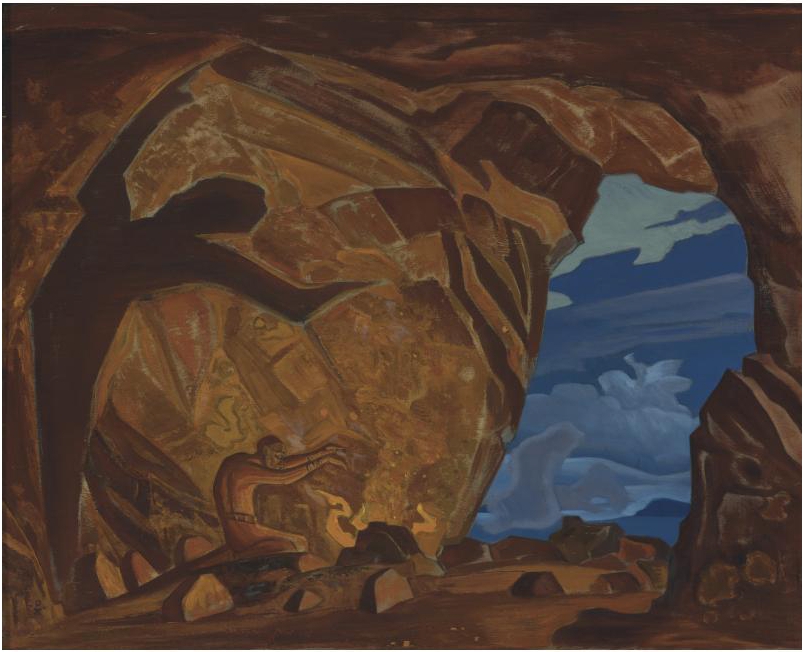 >>
>>
| Картины Н.К.Рериха |
<<  >> >>
| сменить фон |
Ссылка на изображение: http://gallery.facets.ru/pic.php?id=1487&size=3
| |
|
|
||||||||||
|
||||||||||
|
||||||||||
http://www.sothebys.com/en/auctions/ecatalogue/2006/russian-art-n08182/lot.115.html RUSSIAN ART 26 APRIL 2006 - 28 APRIL 2006 | 10:00 AM EDT NEW YORK 115 PROPERTY FROM A PRIVATE COLLECTION, FLORIDA Estimate 150,000 — 200,000 USD LOT SOLD. 374,400 USD Nikolai Konstantinovich Roerich 1874-1947 RUSSIAN WEAVER OF SPELLS signed with Monogram (lower left); also inscribed L'Evocatour (on the reverse) oil and tempera on board 28 3/4 by 31 1/8 in. 73 by 79.4 cm PROVENANCE Property from the Louis Horsch Collection Thence by descent EXHIBITED Stockholm, Exhibition, 1918 New York, The Nicolas Roerich Exhibition, 1920-1922, no. 35
LITERATURE International Art Center, eds. Roerich, New York: Corona Mundi, Inc., 1924, illustrated (titled L'Evocatour) C. Briton, The Nicolas Roerich Exhibition, 1920-1922, New York: Redfield-Kendrich-Odell Co., c 1920, no. 35 as Weaver of Spells, painted in Tulola, 1918 List of Paintings 1917-1924, (MSS in Roerich's hand), no. 65, as Spell, 1918 F. Grant, Paintings by Nicholas Roerich, a Monograph, New York: Bretano's, 1926, pp. 185-200, as Conjuration The Nicholas Roerich Museum, Roerich Museum Catalogue, 8th Edition, New York, 1930, as The Weaver of Spells, 1918, Finland
CATALOGUE NOTE As in Roerich's The Miser (see lot 116), L' Evocatour or The Weaver of Spells is intriguing because of its parabolic possibilities. Reminiscient of Roerich's theater design, the painting conveys this sense of the theatric, and is even intrinsically framed by the walls of the cave. Roerich evokes a sense of mystery and dark eeriness through his choice of color and style. Rich browns and golds inside the cave create a sense of both the macabre and also warmth and safety. The dark, ominous shadow of the seated figure creeps up the wall of the cave, as if it were itself a living being. Outside of the cave, the viewer sees a slice of sky at dusk; however, the cold blues and grays of the outside world do not penetrate. The cave itself is a place of sanctuary and warmth, and also of the supernatural, the otherworldly. Throughout Roerich's oeuvre, Roerich alludes to the sense of man attempting to connect with the spiritual. In addition, the Weaver of Spells also reflects Roerich's fascination with themes of antiquity, and early man. Many of Roerich's paintings, including "Human Forefathers" (1911) and "The Commands of Heaven" (1915) explore the early days of prehistoric man, depicting the purity, innocence and beauty of the pre-industrial age. We would like to thank Daniel Entin, Director of the Nicholas Roerich Museum, New York and his colleague Gvido Trepsha, for providing the additional catalogue information. |
||||||||||

